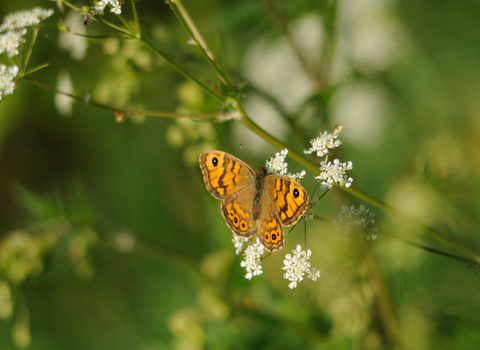Wall Brown ©Adam Cormack

Wall Brown ©Amy Lewis
Gweirloynod y Cloddiau
The wall brown or 'wall' gets its name from the fact it rests on any bare surface or wall! It can be found in open, sunny places like sand dunes, old quarries, grasslands and railway cuttings.
Enw gwyddonol
Lasiommata megeraPryd i'w gweld
May to OctoberGwybodaeth am rywogaethau
Categori
Ystadegau
Wingspan: 4.5-5.3cmPriority Species under the UK Post-2010 Biodiversity Framework.
